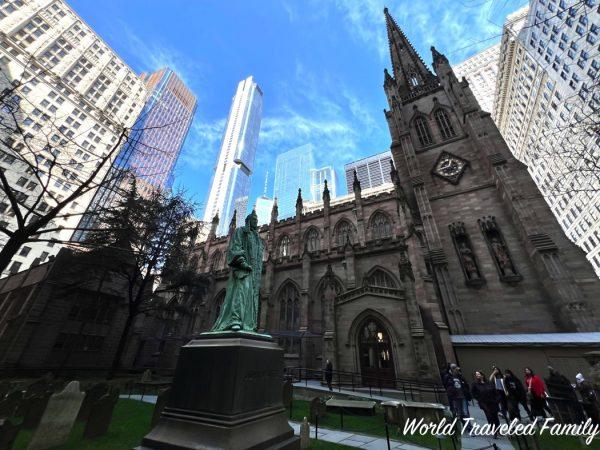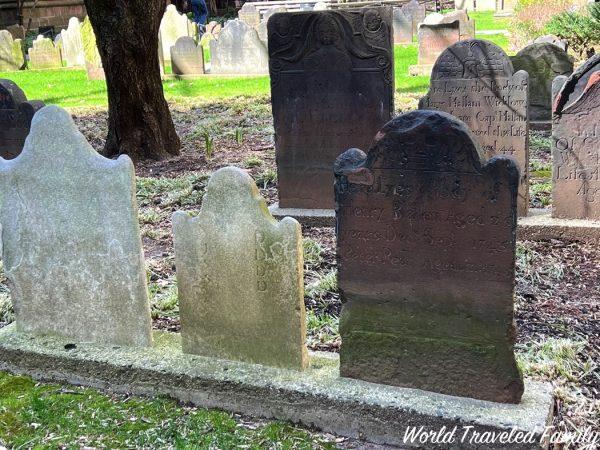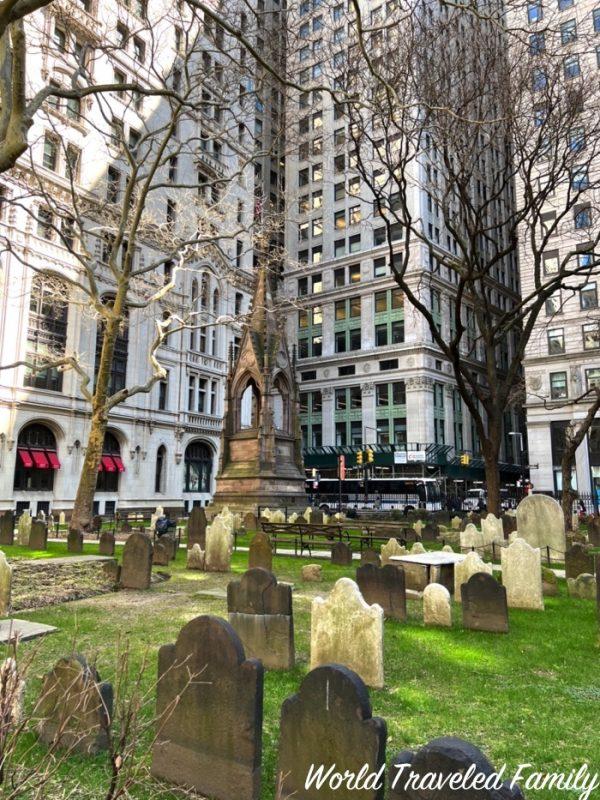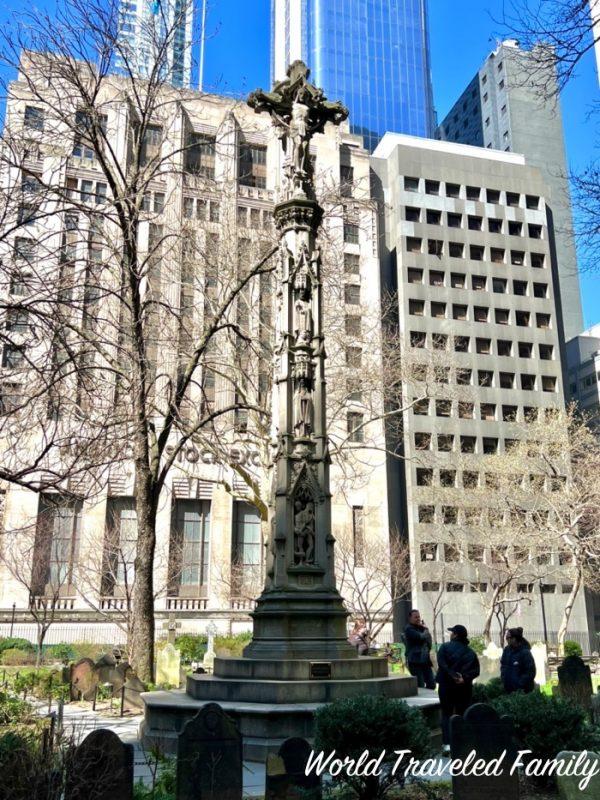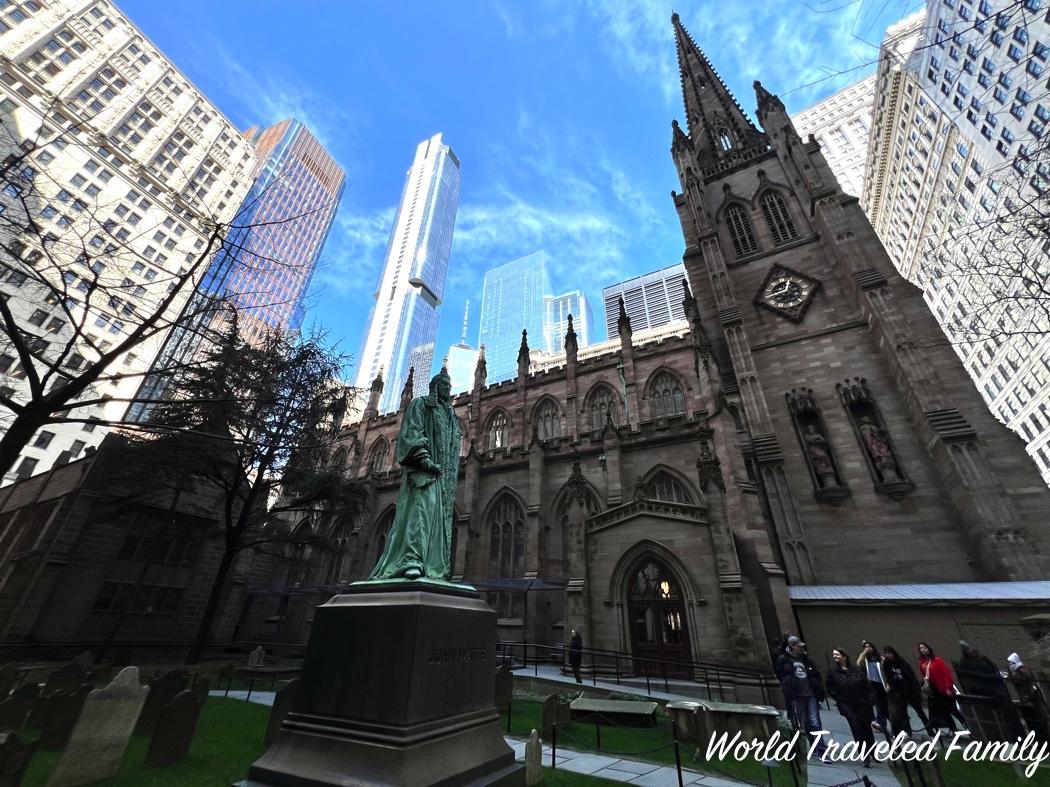Located in the heart of Manhattan’s Financial District, Trinity Church Wall Street stands as a testament to New York City’s rich history and architectural grandeur. For over 300 years, the church has been a beacon of faith, resilience, and community. Whether you’re a history buff, an architecture enthusiast, or someone looking for tranquility amidst the city’s hustle and bustle, Trinity Church offers something for everyone.
Trinity Church was originally built in 1698 under a charter from King William III of England. Its strategic location near the burgeoning Wall Street area quickly made it a significant landmark. Over the centuries, the church has witnessed and withstood numerous historical events, including the Great New York City Fire of 1776 and the terrorist attacks of September 11, 2001.
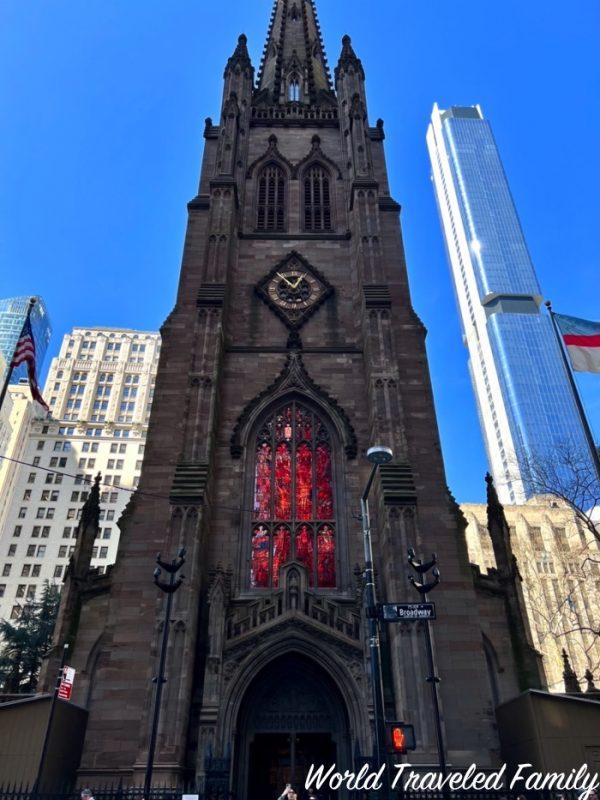
The current Gothic Revival structure, completed in 1846, was designed by Richard Upjohn, a prominent architect of the time. Its soaring spire, which once dominated the Manhattan skyline, stands at an impressive 281 feet. The intricate stone carvings, stunning stained glass windows, and the majestic pipe organ are just a few features that showcase the church’s architectural brilliance.
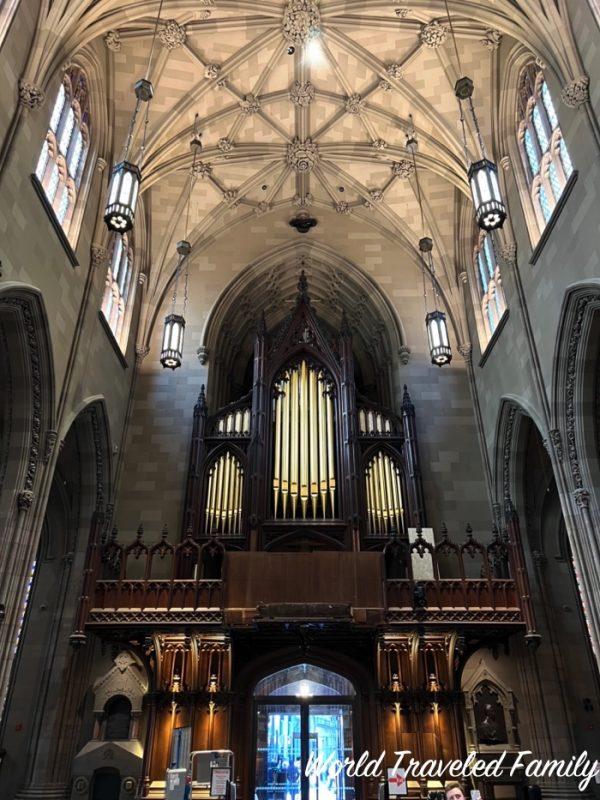
The church has undergone several restorations due to damage from natural events, such as the 9/11 attacks and Hurricane Sandy. The most recent efforts were completed in 2022 and aimed to restore its historical elements while upgrading infrastructure to meet modern safety and accessibility standards.
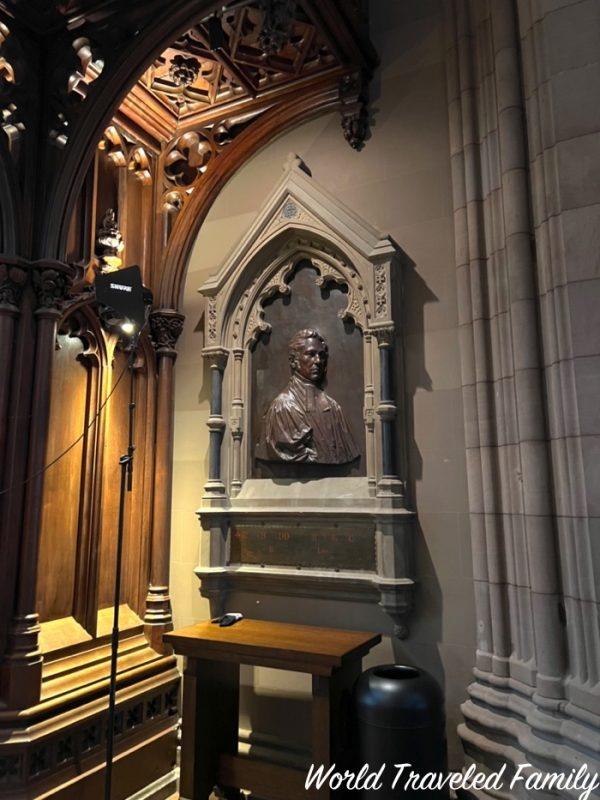
Key features included the church’s stunning stained glass windows, the iconic spire, and detailed stone carvings.
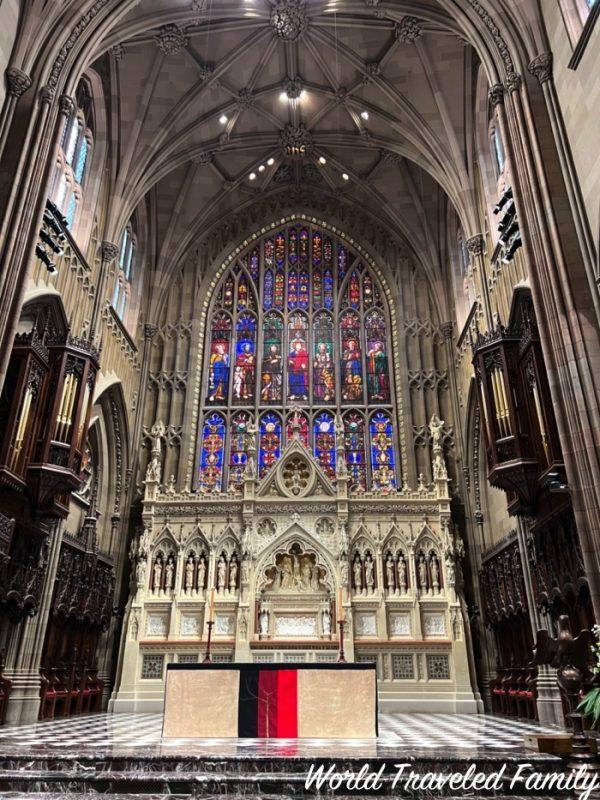
The ongoing work often involves careful restoration of these elements, ensuring they remain true to the original design while incorporating modern materials where possible.
The Churchyard
Adjacent to the church is the historic Trinity Churchyard, one of the oldest burial grounds in New York City. This serene space is the final resting place of many notable figures, including Alexander Hamilton, one of the United States’ Founding Fathers, and Robert Fulton, the inventor of the steamboat.
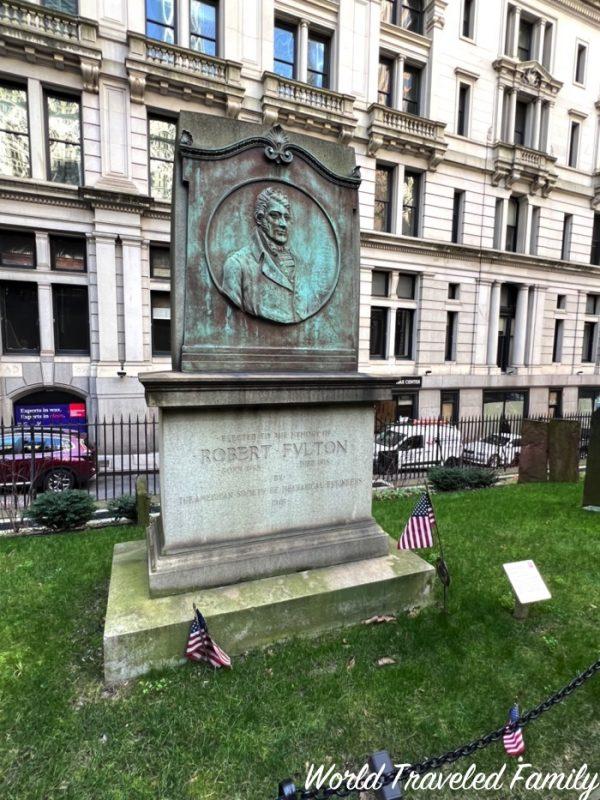
Notable Burials
- Alexander Hamilton:
- Who: Founding Father of the United States, the first Secretary of the Treasury, and founder of the nation’s financial system.
- Significance: Hamilton’s grave is one of the most visited in the churchyard, reflecting his pivotal role in American history. Philip Hamilton, Alexander’s first son is buried next to his father.
- Eliza Hamilton:
- Who: Wife of Alexander Hamilton, co-founder of the first private orphanage in New York City, and a key figure in preserving her husband’s legacy.
- Significance: Eliza’s grave is close to her husband’s, honoring her contributions to American society and her dedication to philanthropy.
- Robert Fulton:
- Who: American engineer and inventor who is widely credited with developing the first commercially successful steamboat.
- Significance: Fulton’s innovations in transportation had a profound impact on commerce and travel in the early United States.
- Albert Gallatin:
- Who: Swiss-American politician, diplomat, and ethnologist who served as the fourth and longest-serving Secretary of the Treasury.
- Significance: Gallatin’s tenure and contributions to the financial infrastructure of the U.S. were instrumental in the nation’s early economic development.
- Captain James Lawrence:
- Who: United States Navy officer known for his command during the War of 1812.
- Significance: Lawrence’s famous dying command, “Don’t give up the ship,” became a rallying cry for the U.S. Navy.
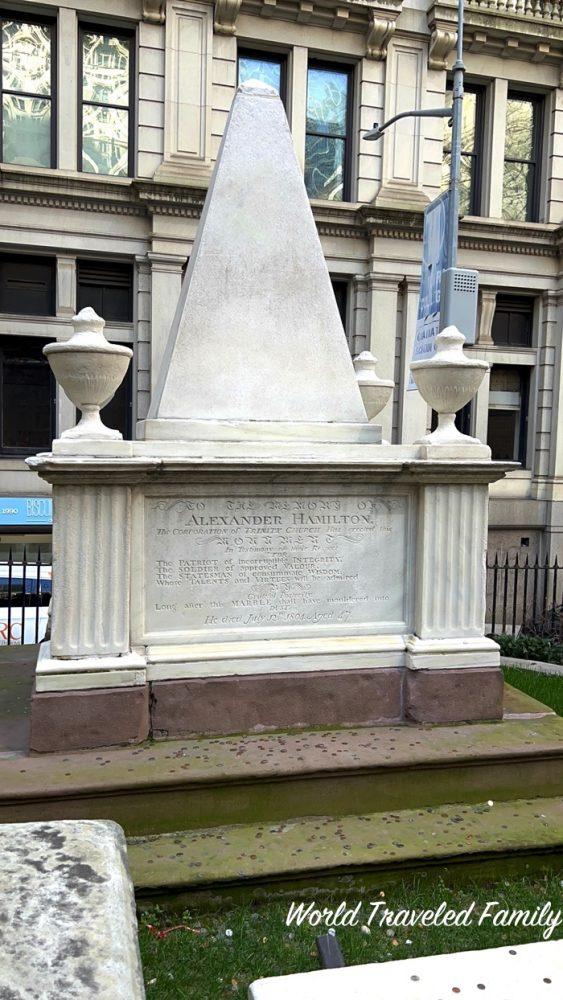
The oldest identified gravestone in the churchyard is that of Richard Churcher, a five-year-old who died in 1681—fourteen years before the original Trinity Church was built.
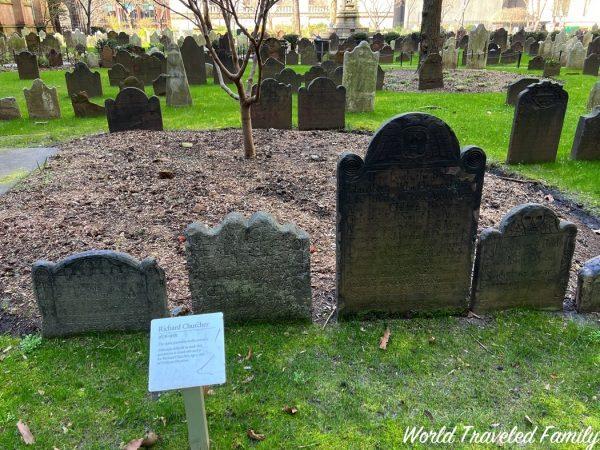
This stone is unique due to its three-dimensional carving of a skull and crossbones on the back. The next oldest gravestone belongs to Richard Churcher’s sibling, who died in 1691.
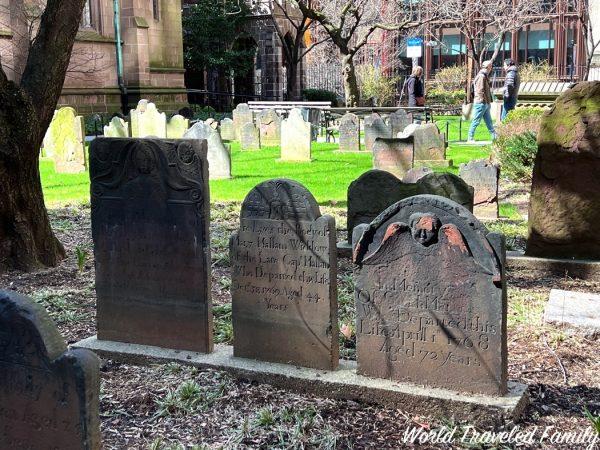
Visiting Trinity Church
Trinity Church welcomes visitors daily, offering guided tours that delve into its rich history and architectural features. The church’s location at the intersection of Broadway and Wall Street makes it easily accessible by public transportation.
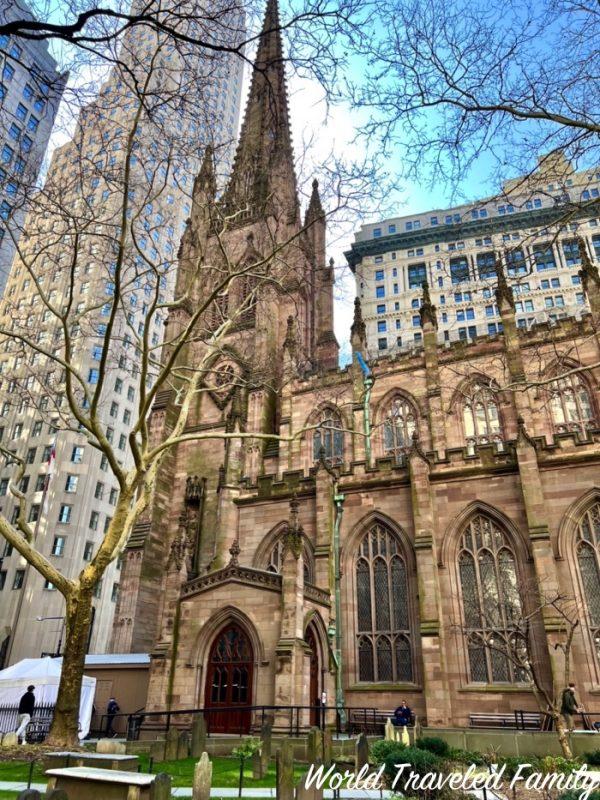
Trinity Church Wall Street is more than just a historical landmark; it is a blend of historical significance, and architectural beauty, making it a must-visit destination for anyone exploring the city.
